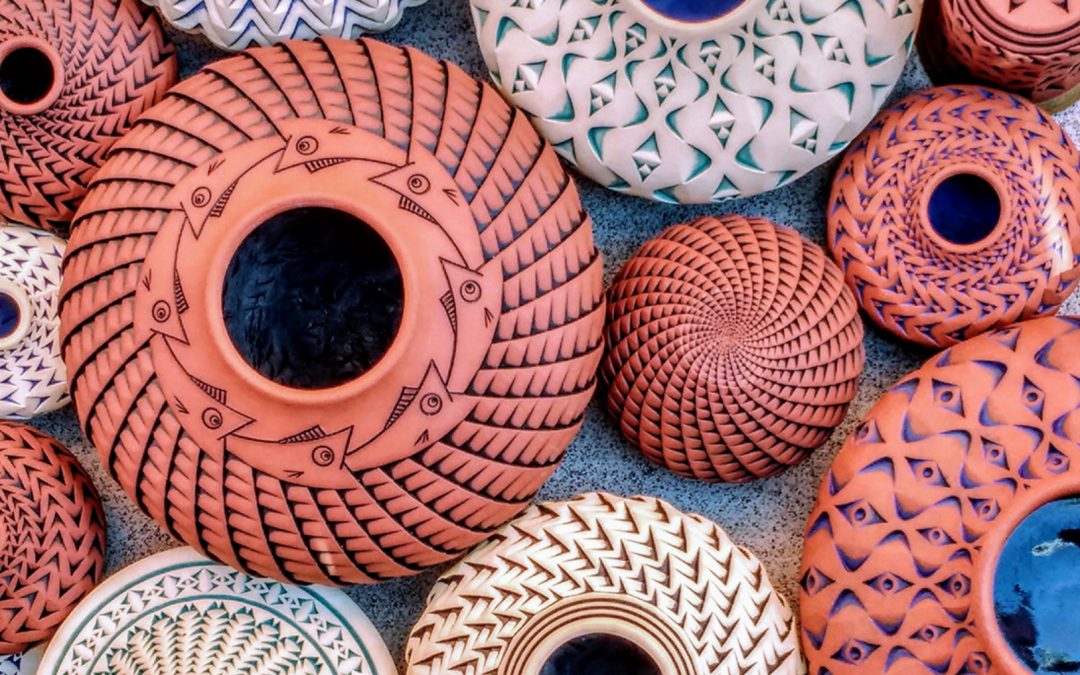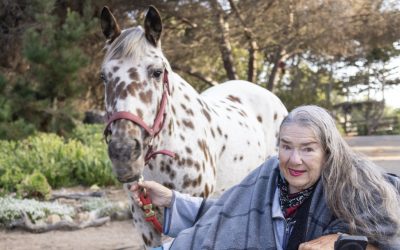There’s something amazing about taking a lump of clay in the morning and, by the end of the day, having a beautiful creation.
Born in 1961, Kenny Standhardt grew up on a Pennsylvania Dutch farm near Boyertown, forty miles northwest of Philadelphia. “My family was the 4th generation on the farm. It was about 200 acres and we raised everything: corn, wheat, oats, alfalfa, timothy, clover. We would ei- ther harvest and sell those products or feed them to our livestock: forty to fifty head of steer, forty to fifty pigs, ducks, chickens, rabbits, all grown for family consumption or to be sold to butchers.” The family also grew all of its own vegetables.
Kenny distinguished between his farm and the farms of Amish and Mennonite families also farming in Pennsylvania. “We were a modern farm, while still using some turn-of-the century techniques, but we used electricity. Many of the Amish and Mennonite farmers are still non-mechanized.”
Clarence, Kenny’s father, farmed but was also a master casket maker for a company in town. Kenny was the youngest of four. “Working the farm was our employment. It was hard work, but I learned how to do everything. I knew how to weld and do carpentry, concrete and engine work. I developed an ‘I can fix this, problem solving’ mind-set. It was very practical, straight- forward, and nothing ornamental. Modesty was a pronounced value in our Lutheran family. It was an accepted way of life.”
There was a spring on the farm, a seasonal stream with carp, and the house had a summer kitchen and a root cellar. When I asked a question about canning on the farm, Kenny responded, “Oh my God, yes. We’d shell a wheelbarrow full of lima beans and the wheelbarrow would come into the kitchen on a tarp for canning. We always had two or three hundred quarts of vegetables, we’d smoke our own meats, hang them in the basement, and we had a big bin of potatoes for the winter. My mother would send me to the neighbor’s when I was six to get milk in gallon cans.”
Because he was the youngest, Kenny often stayed in the kitchen help- ing his mother and grandmother doing handcrafts like embroidery and quilting. “It was where I got my early start and appreciation of fine craft. I loved to embroider. My mother appreciated it, but it alarmed my father,” Kenny said with a laugh.
When he was twelve, Kenny saw a potter, Linda Rorhbach, throwing at a local festival. He was mesmerized. He thought, “That’s what I want to do.” He sat for hours watching her, ran home and asked his father to build him a wheel, which he did using a vise, a two-speed drill, a bolt and a piece of wood, and then told him to go get clay from the creek. That was the beginning of Kenny’s career in ceramics. He eventually bought a kick wheel kit and set up a studio in a chicken coop.
Fortunately for Kenny, Linda Rorhbach, who is still a well-known teacher and potter, was the ceramics teacher when he attended Boyertown High School. Kenny became her apprentice and she even helped negotiate a work-study program for him. “I basically majored in ceramics. With her help I was able to construct my own program, which included a half-day off cam- pus working as her apprentice and potter’s assistant. The school wasn’t happy, but she fought for me and made it happen.”
It was a time in Kenny’s life when he was silently struggling with conflicts about his sexual orientation, a struggle that would continue for a long time. “It was difficult being a queer kid in a small town from a traditional Lutheran family. Both my passion for ceramics and Linda’s support made my life manageable.”
Although not geared for college, Kenny enrolled in Kutztown College when he was twenty. He studied for three years as a ceramics major, and then returned to the farm, built a studio and spent the next four years throwing and working as a landscaper.
“During that time I came to appreciate pattern. I started to develop a body of work based on the influence of early Native Americans. They pressed clay into baskets to seal them, an early theory of ceramics. They created a low bowl and through prairie fire or by mistake they fired that low bowl and the impression of the basket was transferred to the exterior of the bowl.”
Kenny married and built a house on the farm. He discovered he could create beautiful and intricate designs by using a common can and bottle opener, sometimes referred to as a church key. “My focus was on form, pattern and texture. I worked at it for a good three years, got some professional images, applied to and got accepted for the Smithsonian Craft Show, and started to blossom from there. I was able to quit my landscaping job and become a full time potter in 1990. Raised the way I was, I always lived beneath my means, so it didn’t feel like a big risk to devote all my energy to being a potter.”
After a decade of submitting slides to juried shows, wholesaling to galleries and traveling to craft shows around the country, balancing the business side with the artistic side of his vocation, Kenny and his wife moved west, firstto Utah and then to Eugene, Oregon. He continued to show on the east coast, where he still had a studio, but once he got established on the west coast he focused most of his energy here.
By then he was known by juries based on his unique designs. “I dedicated my career to a distinct body of work and then exploring within those parameters. I love work that is beautiful, tactile and functional, meant to be used.”
Kenny’s life changed when he and his wife divorced and he came out as a gay man. “It was evident I was struggling with who I truly was and couldn’t move forward anymore. It was time to tell the truth. We separated amicably and are still friends to this day.” Kenny met Mark Turner, a former Cal Poly employee working as an office manager at the University of Oregon, and they married in 2004 when a window of opportunity was open at that time in Portland.
“We had a wonderful thirteen years in Eugene. It was when I started my open studio in my home and gallery space, which is what I do now in San Luis Obispo. And with the internet and e-commerce it made it much more viable to travel less.” Mark’s business and management skills have been a great complement to Kenny’s creative skills.
Tired of cold winters, Kenny and Mark visited San Luis Obispo in January 2017, where Mark’s parents had previously owned a rental property. They decided they could make the change and within eight months they moved, arriving in August. Months of remodeling a student rental, building a studio and landscaping have yielded a perfect location on Oceanaire for them to live and for Kenny to create and show his pottery. “Being raised on a farm, where function was the primary consideration, incorporating that into something beautiful and functional, that years later people come back and say, ‘I just love drinking from your cup to have my morning tea,’ creates that fusion between an ancient craft and contemporary art. My work has a timeless sense to it, an archaeological feel, but it’s also contemporary. I refer to it as contemporary folk pottery.”
Kenny’s work will be on view at the Morro Bay Art Festival on Labor Day, during the Open Studio Tour sponsored by Arts Obispo in October and at his studio during the holidays. For a personal appointment to Kenny’s studio to see his work and watch him work, you can contact him through his website, standhardtstudio.com, email him at standhardtstudio@gmail.com, or call him at 805-234-0087.
On Pacific Time.
Always open.
Email or call
805-466-2585
Loving Life on the
Central Coast, California
On Pacific time.
Always open.
Email or call
805-466-2585





